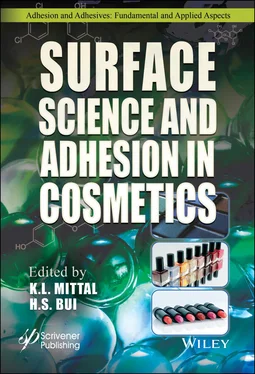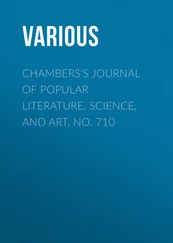Library of Congress Cataloging-in-Publication Data
ISBN 978-1-119-65482-7
Cover image: Pixabay.Com
Cover design by Russell Richardson
Set in size of 11pt and Minion Pro by Manila Typesetting Company, Makati, Philippines
Printed in the USA
10 9 8 7 6 5 4 3 2 1
Cosmetics have been around since the dawn of civilization. The origin and use of cosmetics can be traced to many millennia ago. In the earlier days, cosmetics were prepared by primitive processes using natural products. For example, in India mascara was obtained from smoke generated by lighting up the wick dipped in mustard oil. This is an excellent example of nanotechnology as the particle size in such mascara was in the nanometer range, but in those days nanotechnology was an unknown discipline. More modern cosmetics are based on polymers and other ingredients to endow performance attributes to cosmetics.
A glance at the current literature will evince that there is considerable interest and activity in the relevance of surface chemistry and adhesion aspects in the domain of cosmetics. It should be emphasized that the advent of sophisticated surface analysis techniques has been a boon to understanding the complex structures and topography of biological surfaces. Researchers with variegated backgrounds and different disciplines are engaged in unraveling the interactions between cosmetics and different biological tissues (face skin, lips, hair). Here a few eclectic examples will suffice to underscore the importance of interfacial phenomena in various cosmetic products. An adequate adhesion of lipstick is all too familiar and its retention in the presence of foods and drinks is quite patent. Apropos, if the lipstick gets transferred to a wrong place or to a wrong person it can have unpleasant and serious sociological implications. The proper adhesion of nail polish to nails is another significant example; thus various approaches are adopted to enhance adhesion of nail polish. The surface chemistry of skin can be cited as being extremely important in a spectrum of applications. It should be underscored that biological tissues are very complex in nature and differ based on gender, ethnicity and environment.
It should be noted that although there is much research and development activity in the arena of surface chemistry and adhesion aspects in cosmetics but the information is scattered in many diverse publication media and, to our knowledge, no book exists which discusses surface chemistry and adhesion in cosmetics in a unified manner. This provided the vindication for bringing out this book and thus to fill the lacuna in the literature.
This book containing 18 chapters written by active and eminent researchers hailing from many parts of the globe representing academia and industry is divided into three parts: Part 1: General Topics; Part 2: Surface Science Aspects; and Part 3: Wetting and Adhesion Aspects. The topics covered include: Lip biophysical properties and characterization; effect of cosmetic oils on lipstick structure and its deposit; UV curing of nail gels from different light sources; rheological properties of nail polish/lacquer formulations; advanced silicone materials in long-lasting cosmetics; chemical structure of the hair surface, surface forces and interactions; AFM for hair surface characterization; AFM as a structure characterization tool for hair, skin and cosmetic deposition; SIMS as a surface analytical method for hair, skin and cosmetics; surface tensiometry approach to characterize cosmetic products; spreading of hair-sprays on hair; color transfer from long-wear face foundation products; interactions of polyelectrolytes and surfactants on hair surfaces; adhesion aspects and film-forming properties of hydrocarbon polymers based lipsticks; adhesion of color cosmetic products to skin; factors affecting cosmetics adhesion to facial skin; adhesion aspects in semi-permanent mascara; and lipstick adhesion measurement.
This unique book consolidates in an easily accessible source the current state-of-knowledge regarding surface chemistry and adhesion aspects in the fascinating and sociologically important field of cosmetics. This book should be of immense interest to cosmetologists, dermatologists, beauticians, R&D personnel in industry engaged in developing cosmetics, and researchers in academia. Also surface chemists, adhesionists, materials scientists, polymer chemists, biologists, pharmaceutical scientists and formulation chemists will find this book of much value. We hope this book containing bountiful information will serve as a fountainhead for new ideas to utilize surface chemistry and adhesion aspects in ameliorating the existing or developing new and improved cosmetics. The book is profusely illustrated and copiously referenced.
These days there is tremendous interest in harnessing nanotechnology (e.g. use of nanoparticles) and moving towards “green” cosmetics. As new and improved ingredients for cosmetic formulations become available, one can expect more environmentally benign and more appealing cosmetics in the future.
It gives us great pleasure to thank all those who were instrumental in making this book possible. Obviously, first and foremost our sincere and heart-felt thanks go to the authors for their keen interest, sustained enthusiasm, unwavering cooperation and sharing their valuable research experience in the form of written accounts without which this book could not be materialized. We will be remiss if we fail to extend our thanks to Martin Scrivener (Publisher) for his steadfast interest in and whole-hearted support for this book project.
Kash MittalPO Box 1280 Hopewell Jct., NY 12533, USA raareviews@gmail.com
Hy Si BuiL’Oréal Research and Innovation Clark, NJ, USA
Part 1 GENERAL TOPICS
1
Lip Biophysical Properties and Characterization Methods for Long-Wear Lipsticks
Rebecca Barresi and I-Chien Liao*
L’Oreal Research and Innovation Clark, NJ, USA
Abstract
The lips are two pliable and mobile muscular folds that surround the oral cavity and assist in a variety of functions which enable both human survival and communication. In addition to their functional purpose, the lips are frequently cosmetically enhanced, in terms of color and gloss, through the application of lipsticks. Understanding both the biophysical and surface properties of lips is crucial for the successful formulation and development of lipsticks, particularly those with long-wear or transfer-resistant claims. Various in vitro methods provide a clear insight as to the stability, physical properties, and visual characteristics of a lipstick formulation, but a correlation between such results and consumer use experience is still lacking.
This book chapter provides an overview of the lip anatomy and lip surface properties, which can be used to provide a general knowledge for lipstick formulation. While much is known in regards to the structure and functionality of the lip tissue, obtaining further knowledge can assist in the development of superior performing lipstick formulations. Classic in vitro test methods for long-wear lipsticks, in addition to such test results correlations with consumer sensory testing, are also discussed. It is important to note that although there is an abundance of in vitro methods available in order to characterize long-wear and transfer-resistant lipsticks, there is still a definite need to develop new methods that better correlate with consumer experience. Existing methods have the potential to be further improved with new knowledge of lip properties and use of better test substrates to illustrate the benefits of new product innovations.
Читать дальше












